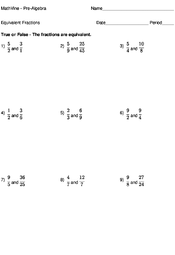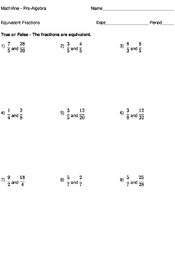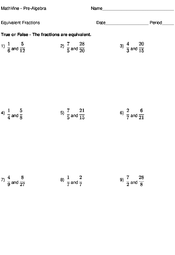Equivalent Fractions
Introduction
Equivalent fractions are fractions that are equal. In order to determine if one fraction is equal or equivalent to another, both fractions must first be simplified if needed.
Terms
Lesson
To determine if a fraction is equivalent to another, we need to compare the two fractions in their simplest form. So if we are given and , we can see that is in its simplest form, but can be further reduced to by dividing the top and bottom by 2.
Therefore and are equivalent fractions.
Similarly, if we are given and , we first simplify both fractions.
We can now see that is NOT equivalent to , because is not equivalent to
To find the equivalent of a fraction when we are given either the numerator or denominator is similar to expressing a fraction in higher terms. If we are told to solve the following problem:
we can determine that in order for the new numerator to equal 15, the original numerator must be multiplied by 5. So we multiply the denominator by 5 as well, and get the answer


